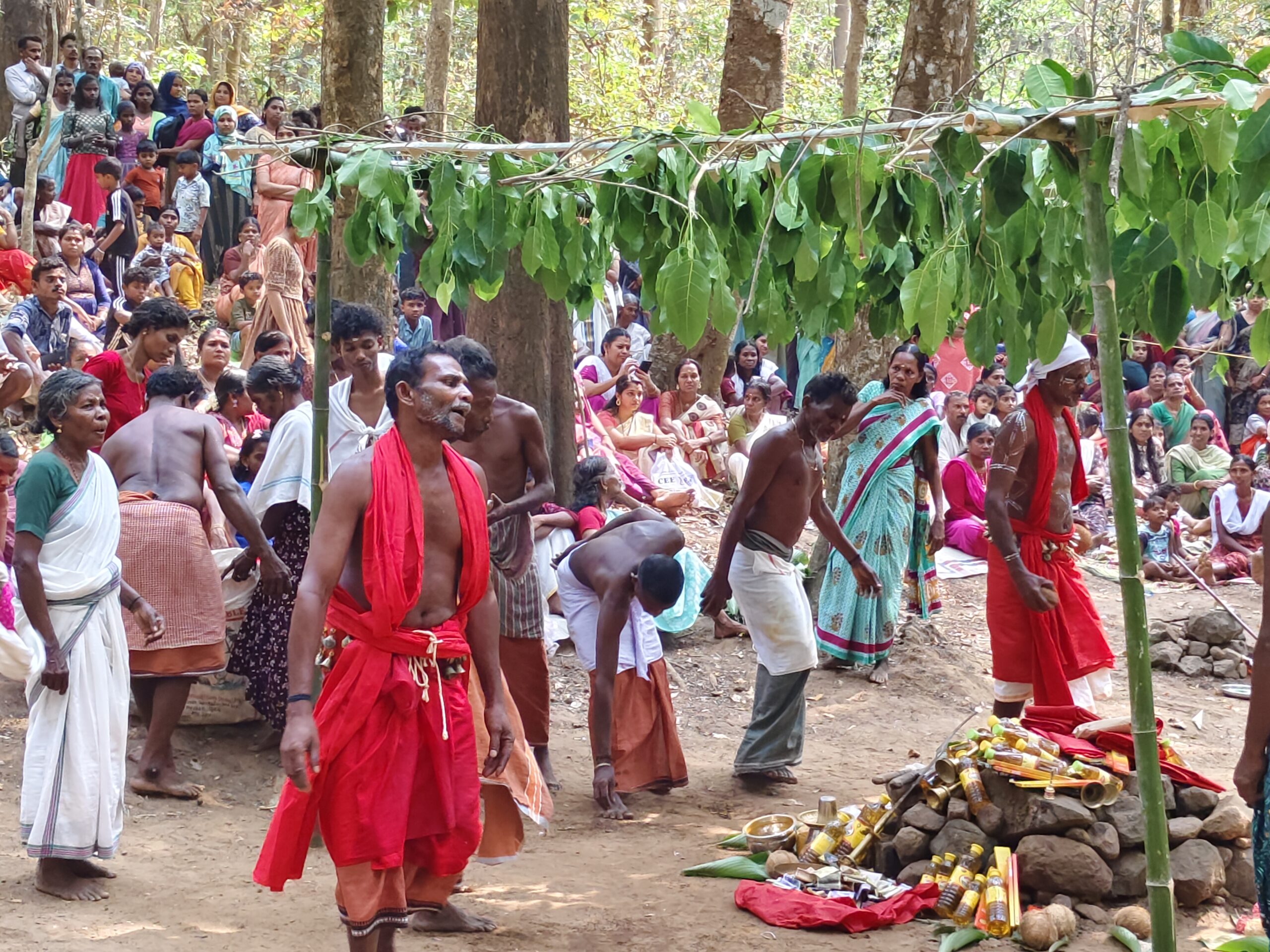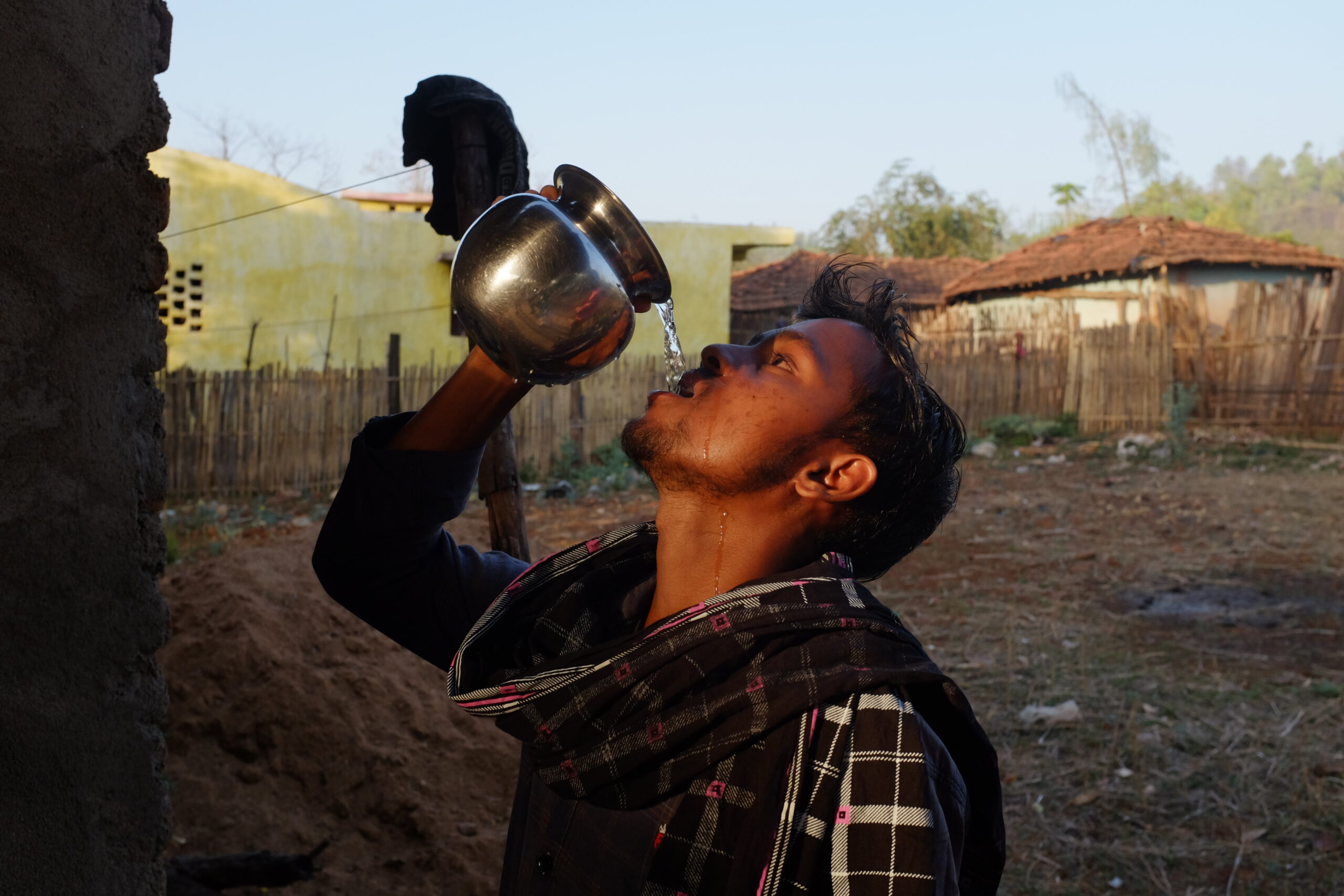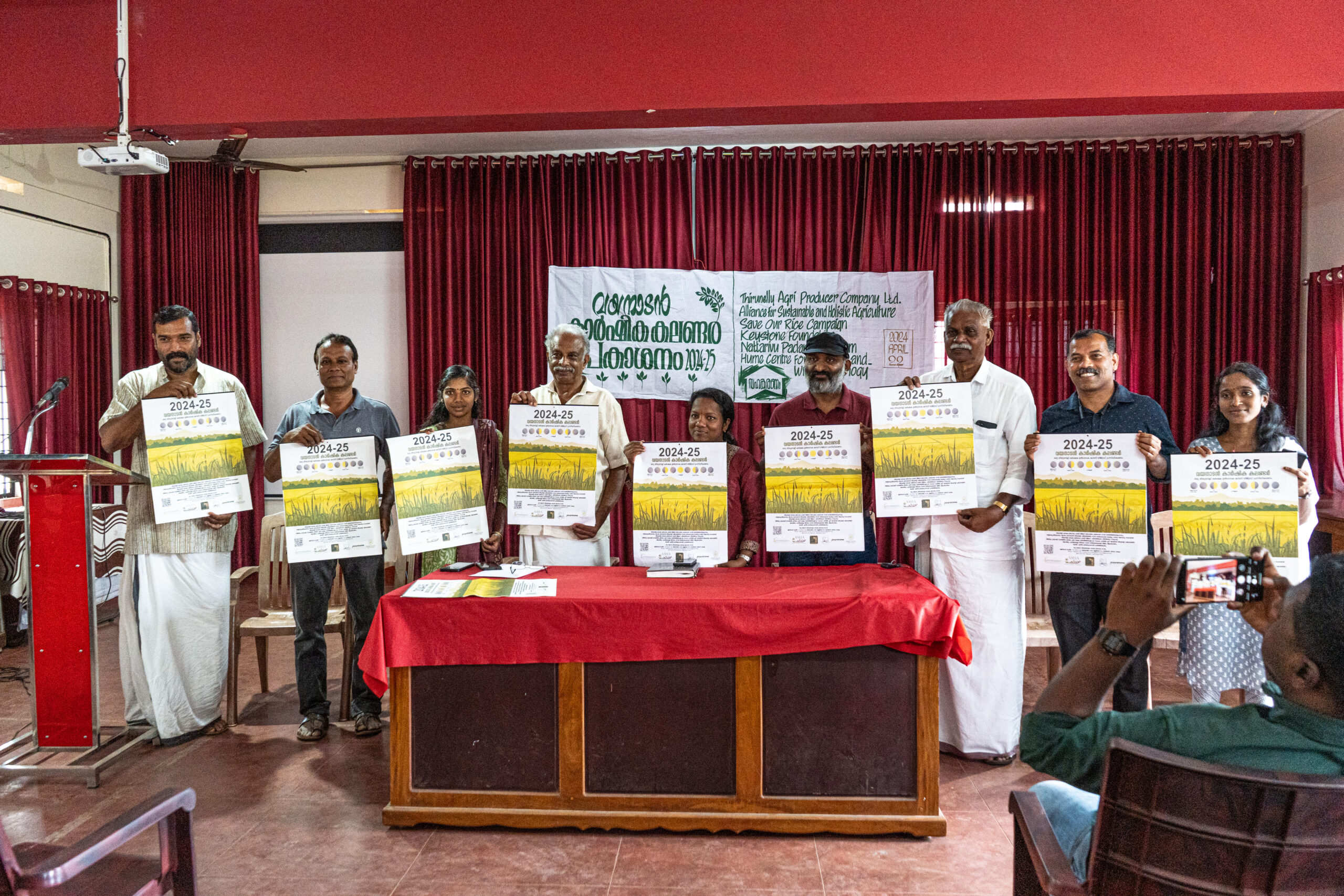September 14, 2023
By Jyoti Patale
Consultant, Networks & Alliances (Eastern India)
Today, a vibrant and enriching traditional food mela took place in Chiro Nawa Toli of Orsa Panchayat, Mahuadanr Block, Latehar District, Jharkhand, showcasing the rich tradition of the tribal community. This delightful event brought together around 20 women (many of them are part of Pat Agragami Mahila Sangh, women’s collectives supported by GAGGA) who dedicated their skills and passion to prepare an array of dishes that celebrated the use of wild vegetables, wild mushrooms, millets and mahua flowers (Madhuca longifolia) as key ingredients.
The traditional mela was not just a gathering but also a celebration of cultural wisdom and community bonding. The women worked tirelessly to create 24 different varieties of dishes. They infused their preparation with the joy of song, harmonising melodies with the rhythm of their cooking. This musical accompaniment not only made the food preparation enjoyable but also served as a way to pass down traditions and stories from one generation to the next. Food preparations for two dishes are given here.
Tatair Chiti
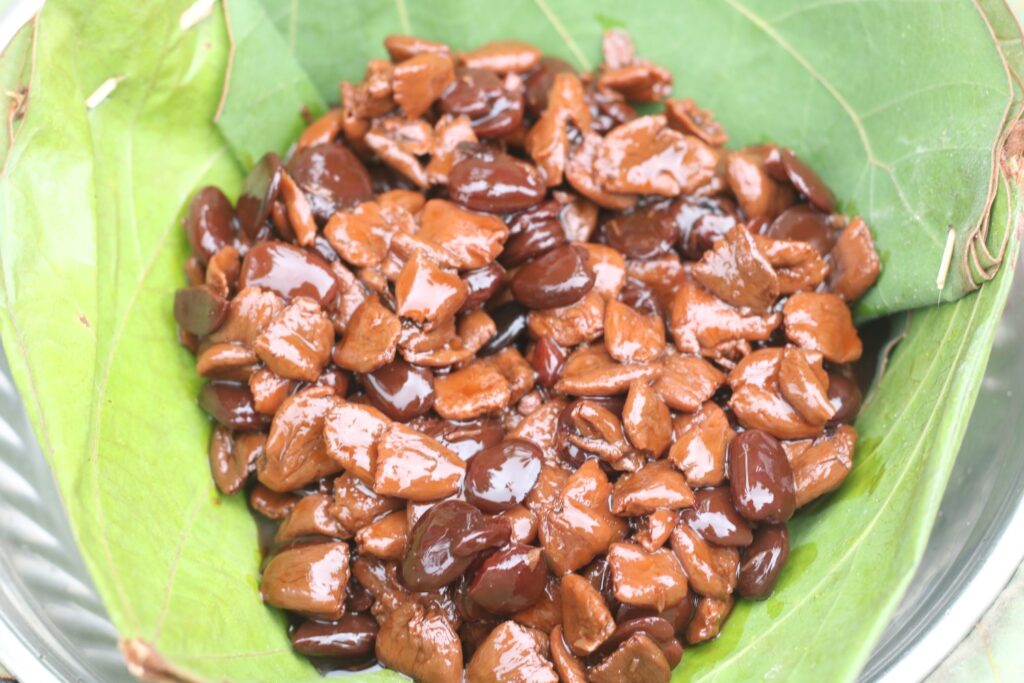
The preparation of this traditional dish made from dried mahua (Madhuca longifolia tree flowers) and tamarind seeds, is a time-consuming cooking process that demands the dedication and hard work of skilled individuals like Bimala.
Bimala’s preparation began with roasting tamarind seeds in a khapra (Mud water container). She spread some water on roasted seeds. After separating the seed covers in a dheki (Wooden rice pounder), the seeds were boiled, a process that took a couple of hours. The tamarind seed cleaning continued with a thorough washing at a nearby stream, taking an additional half-hour. Simultaneously, preparations for the mahua component were underway, involving cleaning, drying, and the removal of covers. The mahua was then added to boiling water. Once half boiled, she added tamarind seeds to it. The cooking process for both mahua and tamarind seeds extended over a gruelling 17 hours.
Madua Purwa Roti
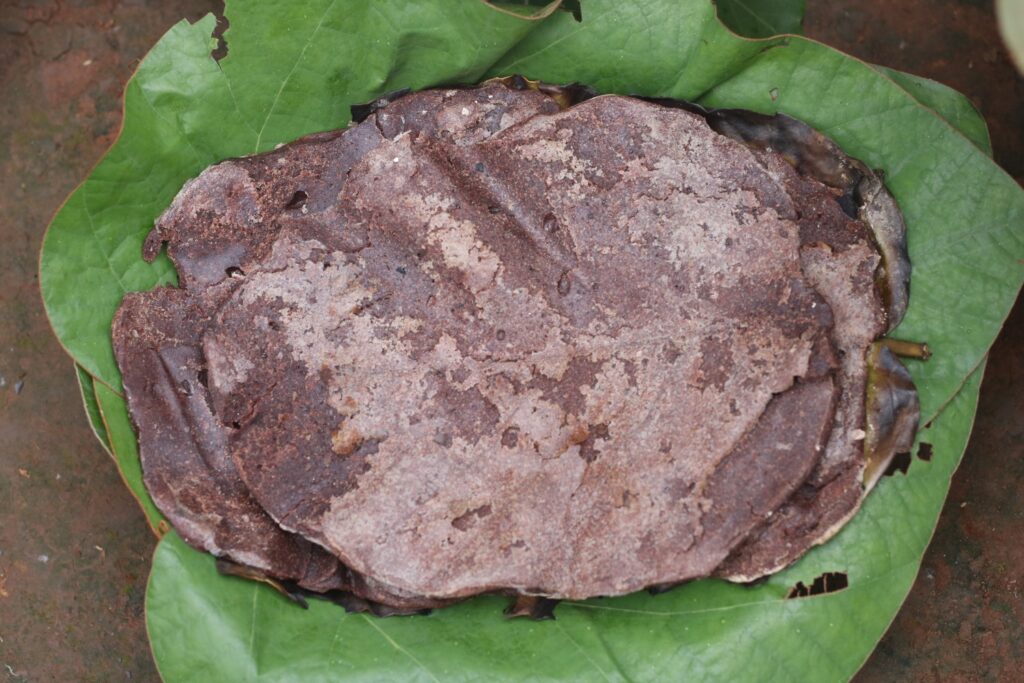
Madua (Finger millet) purwa roti was another dish prepared by Sushma. To prepare the madua flour, she used a traditional stone grinder. Manually making flour from a stone grinder requires hard work. She prepared that flour a day before making the roti. While preparing roti she added water to the flour and made a dough out of it. This dough was placed on a sarai patta (Shorea robusta leaf) and flattened into a leaf shape, putting little pressure on it. Another sarai patta was then placed on the top of the flattened dough, and after heating the khapra (Mud water container), Sushma Didi cooked the roti on it. It took about 15 minutes to cook the roti.
The deliberate and patient approach to food preparation not only preserves its nutritional values but also reflects the unwavering dedication of women in preserving their traditions. The dishes served as a testament to the value placed on local ingredients, the endurance of cultural traditions, and the deep connection between food and community.



